| CE: De Materia Medica, written by Greek physician Dioscorides, described six hundred medicinal plants, including licorice and rhodiola.
220: The Shennong Herbal recorded 252 medicinal herbs used in China, including Asian ginseng, astragalus, and reishi.
1755: Rhodiola was included in the first Swedish Pharmacopoeia. In the past, Vikings had used the herb to enhance their physical strength and endurance.
1947: The term adaptogen is coined by Dr. Nikolai Lazarev. 1958: Soviet researchers describe the action of Eleutherococcus as that of an adaptogen. | | GUDUCHI
Botanical Name: Tinospora cordifolia Family: Menispermaceae
Common Names: Indian tinospora, heart-leaved moonseed Taste/Energy: Bitter, warm, dry
(From Indian medicinal plants by B. D. Basu, 1918)
Guduchi
Parts Used: Stem and root
Location/Cultivation: This herb is a vine that commonly grows throughout the tropical parts of India, Myanmar, and Sri Lanka. Safety Rating: ? ? V2
Properties: Adaptogen, anti-inflammatory, antioxidant, choleretic, diuretic, febrifuge, hepatoprotective, and immune amphoteric. | | In India, small patches of it are
HOLY BASIL
Holy basil
(From Indian medicinal plants by B. D. Basu, 1918) widely cultivated for daily use. There are at least three types of holy basil. The green-leafed variety sri or rama tulsi is the most common. The second type [Krishna tulsi) bears dark-green to purple leaves; this variety has a stronger taste and smell. The third type [vana tulsi, O. gratissimum) is a green-leafed forest variety that often grows wild. Safety Rating: ? ? ? |
Frantisek Stary
See book keywords and concepts | 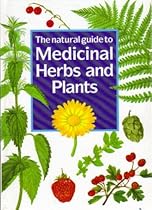 The genus Alchemilla includes a great number of described species and lower taxons, difficult to differentiate even for an experienced botanist, let alone for a person gathering medicinal plants. Lady's Mantle is considered to be an aggregate of species native to the temperate regions of Europe, western Asia, north Africa and southeastern Canada. Elsewhere it is an introduced species. The flowering stems and the basal leaves only are used for medicinal purposes. Undamaged paper sacks, protected from light, are used to store the drug. If overdried, Lady's Mantle readily crumbles. The genus Alchemilla includes a great number of described species and lower taxons, difficult to differentiate even for an experienced botanist, let alone for a person gathering medicinal plants. Lady's Mantle is considered to be an aggregate of species native to the temperate regions of Europe, western Asia, north Africa and southeastern Canada. Elsewhere it is an introduced species. The flowering stems and the basal leaves only are used for medicinal purposes. Undamaged paper sacks, protected from light, are used to store the drug. If overdried, Lady's Mantle readily crumbles. |
Joerg Gruenwald, Ph.D.
See book keywords and concepts |  Oliver-Bever B (Ed.), medicinal plants of Tropical West Africa, Cambridge University Press Cambridge, London 1986.
Roth L, Daunderer M, Kormann K, Giftpflanzen, Pflanzengifte, 4. Aufl., Ecomed Fachverlag Landsberg Lech 1993.
Anacyclus Pyrethrum
Pellitory
DESCRIPTION
Medicinal Parts: The medicinal part is the root.
Flower and Fruit: Each stem bears a 1 cm wide flower. The bracts are fused. The ray florets are white and tinged purple beneath. The disc florets are pointed. The fruit has transparent wings. Oliver-Bever B (Ed.), medicinal plants of Tropical West Africa, Cambridge University Press Cambridge, London 1986.
Roth L, Daunderer M, Kormann K, Giftpflanzen, Pflanzengifte, 4. Aufl., Ecomed Fachverlag Landsberg Lech 1993.
Anacyclus Pyrethrum
Pellitory
DESCRIPTION
Medicinal Parts: The medicinal part is the root.
Flower and Fruit: Each stem bears a 1 cm wide flower. The bracts are fused. The ray florets are white and tinged purple beneath. The disc florets are pointed. The fruit has transparent wings. | | Oliver-Bever B (Ed.), medicinal plants of Tropical West Africa, Cambridge University Press, Cambridge 1986.
Roth L, Daunderer M. Kormann K, Giftpflanzen. Pflanzengifte, 4. Aufl., Ecomed Fachverlag Landsberg Lech 1993.
Steinegger E, Hansel R, Pharmakognosie, 5. Aufl., Springer Verlag Heidelberg 1992.
Teuscher E, Lindequist U, Biogene Gifte - Biologie, Chemie, Pharmakologie, 2. Aufl., Fischer Verlag Stuttgart 1994.
Teuscher E. Biogene Arzneimittel, 5. Aufl., Wiss. Verlagsges. Stuttgart 1997.
Wagner H, Wiesenauer M, Phytotherapie. | | Oliver-Bever B (Ed.), medicinal plants of Tropical West Africa, Cambridge University Press Cambridge, London 1986.
Sharp TM, (1934) J Chem Soc 287.
Further information in:
Kern W, List PH, Horhammer L (Hrsg.), Hagers Handbuch der Pharmazeutischen Praxis, 4. Aufl., Bde. 1-8, Springer Verlag Berlin, Heidelberg, New York, 1969.
Althaea Officinalis
Marshmallow
DESCRIPTION
Medicinal Parts: The medicinal parts are the mallow flowers, leaves, and roots.
Flower and Fruit: The reddish-white flowers are usually in axillary or terminal clusters. |
Rainer W. Bussmann and Douglas Sharon
See book keywords and concepts |  Parts of medicinal plants Used and Mode of Application
In most cases (61%) the whole plant was used for medicinal purposes, followed by leaves (13%) and flowers (6%); seeds, roots, bark, fruits, and latex were rarely used (3% each). Almost all remedies were prepared from fresh plant material (96%). All of the introduced plant species were cultivated in fields and gardens, while most of the indigenous species were collected in the wild. Diseases and other health problems were most frequently treated with decoctions of various plant species. The use of single species for treatments was rare. Parts of medicinal plants Used and Mode of Application
In most cases (61%) the whole plant was used for medicinal purposes, followed by leaves (13%) and flowers (6%); seeds, roots, bark, fruits, and latex were rarely used (3% each). Almost all remedies were prepared from fresh plant material (96%). All of the introduced plant species were cultivated in fields and gardens, while most of the indigenous species were collected in the wild. Diseases and other health problems were most frequently treated with decoctions of various plant species. The use of single species for treatments was rare. |
Andrew Chevallier
See book keywords and concepts | 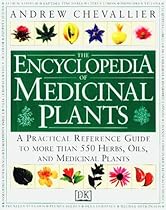 Herbs & Body Systems
One of the most common ways of classifying medicinal plants is to identify their actions, for example, whether they are sedative, antiseptic or diuretic, and the degree to which they affect different body systems. Herbs often have a pronounced action on a particular body system, for example, a plant that is strongly antiseptic in the digestive tract may be less so in the respiratory tract. Examples of how herbs work on the body are given below.
Calendula
(Calendula officinalis)
Echinacea
(Echinacea spp.)
Skin
Antiseptics, e.g., tea tree (Melaleuca alternifolia, p. Herbs & Body Systems
One of the most common ways of classifying medicinal plants is to identify their actions, for example, whether they are sedative, antiseptic or diuretic, and the degree to which they affect different body systems. Herbs often have a pronounced action on a particular body system, for example, a plant that is strongly antiseptic in the digestive tract may be less so in the respiratory tract. Examples of how herbs work on the body are given below.
Calendula
(Calendula officinalis)
Echinacea
(Echinacea spp.)
Skin
Antiseptics, e.g., tea tree (Melaleuca alternifolia, p. |
Joerg Gruenwald, Ph.D.
See book keywords and concepts |  Oliver-Bever B (Ed.), medicinal plants of Tropical West Africa, Cambridge University Press Cambridge, London 1986.
Azedarach
See Azadirachta Indica
Bael
See Aegle Marmelos
Ballota Nigra
Horehound
DESCRIPTION
Flower and Fruit: The clearly stemed flowers are 1 to 1.5 cm long. They are arranged in 4 to 10 fairly loose and often short-stemmed cymes in the axils of the cauline leaves. The bracteoles are arrow-shaped and soft. They are half as long as the funnel-shaped, downy to silky-shaggy haired calyx. The calyx has 5 awned tips. The corolla is reddish-lilac, occasionally white. Oliver-Bever B (Ed.), medicinal plants of Tropical West Africa, Cambridge University Press Cambridge, London 1986.
Azedarach
See Azadirachta Indica
Bael
See Aegle Marmelos
Ballota Nigra
Horehound
DESCRIPTION
Flower and Fruit: The clearly stemed flowers are 1 to 1.5 cm long. They are arranged in 4 to 10 fairly loose and often short-stemmed cymes in the axils of the cauline leaves. The bracteoles are arrow-shaped and soft. They are half as long as the funnel-shaped, downy to silky-shaggy haired calyx. The calyx has 5 awned tips. The corolla is reddish-lilac, occasionally white. | | Morton JF, An Atlas of medicinal plants of Middle America, Charles C. Thomas USA 1981.
Drosera Rotundifolia
Sundew
DESCRIPTION
Medicinal Parts: The medicinal part is the whole herb.
Flower and Fruit: Size: The plant is from 7 to 20 cm tall. The flowers are white and arranged in racemes turned to one side. There are 5 sepals, 5 petals and 1 ovary with 3 to 5 styles. The fruit is capsular.
Leaves, Stem and Root: The leaves are basal rosette, long-petioled and thickly covered in red glandular hairs. The thickened ends have a drop of viscid juice to trap insects. | | Medicinal Plants of Tropical West Africa, Cambridge University Press UK.
Sharma BR and Sharma P, (1981) Planta Med 43:102.
Schimmer O, Furochinolinalkaloide als biologisch aktive Naturstoffe. In: ZPT 12(5):151. 1991.
Aegopodium Podagraria
Goutweed
DESCRIPTION
Flower and Fruit: The flowers range from 50 to 100 cm. They have large white or reddish double umbels that are usually androgynous. The flowers have no involucre and no calyx. The petals are white or pink, about 1.5 mm long, obcordate and cuneate at the base. The fruit is oblong and brownish with pale veins. |
Andrew Chevallier
See book keywords and concepts |  Cardiac Glycosides
Found in various medicinal plants, most famously in common foxglove (Digitalis purpurea, p. 199), yellow foxglove (D. lutea, p. 199), and wooly foxglove (D. lauata), cardiac glycosides such as digitoxin, digoxin, and gitoxin have a strong, direct action on the heart, helping to support its strength and rate of contraction when it is fiiling. Cardiac glycosides are also significantly diuretic. They help to transfer fluids from the tissues and circulatory system to the urinary Common tract> thereby lowering Foxglove blood pressure. Cardiac Glycosides
Found in various medicinal plants, most famously in common foxglove (Digitalis purpurea, p. 199), yellow foxglove (D. lutea, p. 199), and wooly foxglove (D. lauata), cardiac glycosides such as digitoxin, digoxin, and gitoxin have a strong, direct action on the heart, helping to support its strength and rate of contraction when it is fiiling. Cardiac glycosides are also significantly diuretic. They help to transfer fluids from the tissues and circulatory system to the urinary Common tract> thereby lowering Foxglove blood pressure. |
Frantisek Stary
See book keywords and concepts |  The first group includes synthetic medicines, the second most drugs from medicinal plants and naturally also preparations from these drugs such as herbal teas, infusions, tinctures and extracts. The objective person must acknowledge that we need both groups of medicines.
Synthetic medicines enable the physician to give rapid and effective treatment in acute cases. Natural medicines, on the other hand, if administered correctly, generally have a mild action and the effect usually occurs after a lengthier period. The first group includes synthetic medicines, the second most drugs from medicinal plants and naturally also preparations from these drugs such as herbal teas, infusions, tinctures and extracts. The objective person must acknowledge that we need both groups of medicines.
Synthetic medicines enable the physician to give rapid and effective treatment in acute cases. Natural medicines, on the other hand, if administered correctly, generally have a mild action and the effect usually occurs after a lengthier period. |
Susun S. Weed
See book keywords and concepts |  Medicinal Plants, Steven Foster, James Duke, Houghton Mifflin, 1990
13. medicinal plants of the Mountain West, Michael Moore, Museum of New Mexico Press, 1979
14. medicinal plants of the Pacific West, M. Moore, Red Crane, 1993
15. Medicines from the Earth, R. E. Schultes, Harper & Row, 1978
16. Milk Thistle, Christopher Hobbs, Botanica, 1992
17. Natural Healing in Gynecology, Rina Nissim, Pandora, 1986
18. "Natural killer and antibody-dependent cell-mediated cytotoxicity activities in Viscum album-treated breast cancer patients," Hajito and Langrein, Oncology 43:93-7, 1986
19. Medicinal Plants, Steven Foster, James Duke, Houghton Mifflin, 1990
13. medicinal plants of the Mountain West, Michael Moore, Museum of New Mexico Press, 1979
14. medicinal plants of the Pacific West, M. Moore, Red Crane, 1993
15. Medicines from the Earth, R. E. Schultes, Harper & Row, 1978
16. Milk Thistle, Christopher Hobbs, Botanica, 1992
17. Natural Healing in Gynecology, Rina Nissim, Pandora, 1986
18. "Natural killer and antibody-dependent cell-mediated cytotoxicity activities in Viscum album-treated breast cancer patients," Hajito and Langrein, Oncology 43:93-7, 1986
19. |
Rainer W. Bussmann and Douglas Sharon
See book keywords and concepts |  Sustainable cultivation of medicinal plants.
• Reliable information for consumers on the proper use of Traditional Medicine and Complementary Alternative Medicine therapies and products.
The present study, financed through the "MHIRT," attempts to address some of these issues. MIRT (Minority International Research and Training) or MHIRT (Minority Health Disparity International Research and Training) as it was recently renamed, is funded by a grant from the National Institutes of Health, administered by the Fogarty International Center for Advanced Studies in Washington, D.C. Sustainable cultivation of medicinal plants.
• Reliable information for consumers on the proper use of Traditional Medicine and Complementary Alternative Medicine therapies and products.
The present study, financed through the "MHIRT," attempts to address some of these issues. MIRT (Minority International Research and Training) or MHIRT (Minority Health Disparity International Research and Training) as it was recently renamed, is funded by a grant from the National Institutes of Health, administered by the Fogarty International Center for Advanced Studies in Washington, D.C. |
Richard Beliveau, Ph.D. and Denis Gingras, Ph.D.
See book keywords and concepts |  THE THERAPEUTIC PROPERTIES OF TURMERIC
Turmeric was already featured in the list of more than 250 medicinal plants mentioned in a series of medical treatises dating from 3000 B.C., written in cuneiform on stone tablets, collected by King Assurbanipal (669-627 B.C.), and published in the mid-twentieth century by the English archaeologist R.C. Thompson under the title A Dictionary of Assyrian Botany.
Scientists' interest in turmeric as a food perhaps capable of preventing cancer grew from our awareness of its presence in numerous past medicinal traditions. THE THERAPEUTIC PROPERTIES OF TURMERIC
Turmeric was already featured in the list of more than 250 medicinal plants mentioned in a series of medical treatises dating from 3000 B.C., written in cuneiform on stone tablets, collected by King Assurbanipal (669-627 B.C.), and published in the mid-twentieth century by the English archaeologist R.C. Thompson under the title A Dictionary of Assyrian Botany.
Scientists' interest in turmeric as a food perhaps capable of preventing cancer grew from our awareness of its presence in numerous past medicinal traditions. |
Rainer W. Bussmann and Douglas Sharon
See book keywords and concepts |  Parts of medicinal plants Used and Mode of Application
Northern Peruvian curanderos prefer to use either the leaves (in 25% of all uses) or the whole plant (24%) for the preparation of their remedies. In 19% of the cases the stems of the plants were used, most commonly together with the leaves. Flowers (10%), Seeds (7%), fruits and roots (4% each), bark (3%), fruit peel (2%), and latex and wood (1% each) were only used for a small number of preparations.
Almost two-thirds (64%) of the remedies employed in Northern Peru are prepared using fresh plant material. Parts of medicinal plants Used and Mode of Application
Northern Peruvian curanderos prefer to use either the leaves (in 25% of all uses) or the whole plant (24%) for the preparation of their remedies. In 19% of the cases the stems of the plants were used, most commonly together with the leaves. Flowers (10%), Seeds (7%), fruits and roots (4% each), bark (3%), fruit peel (2%), and latex and wood (1% each) were only used for a small number of preparations.
Almost two-thirds (64%) of the remedies employed in Northern Peru are prepared using fresh plant material. | | Many of the introduced species were medicinal plants that were brought in for the treatment of European diseases during colonial times.
The families best represented were Asteraceae with 69 species, Fabaceae(35), Lamiaceae(25),andSolanaceae(21).Euphorbiaceae had 12 species, and Poaceae and Apiaceae 11 species. |
Susun S. Weed
See book keywords and concepts |  Indian Herbology, Alma Hutchens, Merco, 1969
12. medicinal plants, Steven Foster, James Duke, Houghton Mifflin, 1990
13. medicinal plants of the Mountain West, Michael Moore, Museum of New Mexico Press, 1979
14. medicinal plants of the Pacific West, M. Moore, Red Crane, 1993
15. Medicines from the Earth, R. E. Schultes, Harper & Row, 1978
16. Milk Thistle, Christopher Hobbs, Botanica, 1992
17. Natural Healing in Gynecology, Rina Nissim, Pandora, 1986
18. Indian Herbology, Alma Hutchens, Merco, 1969
12. medicinal plants, Steven Foster, James Duke, Houghton Mifflin, 1990
13. medicinal plants of the Mountain West, Michael Moore, Museum of New Mexico Press, 1979
14. medicinal plants of the Pacific West, M. Moore, Red Crane, 1993
15. Medicines from the Earth, R. E. Schultes, Harper & Row, 1978
16. Milk Thistle, Christopher Hobbs, Botanica, 1992
17. Natural Healing in Gynecology, Rina Nissim, Pandora, 1986
18. |
Rainer W. Bussmann and Douglas Sharon
See book keywords and concepts |  DB) of 510 medicinal plants organized under the headings: scientific name, vernacular name, plant parts used, administration, preparation, use, and collection number [20, 21, 22, 23, 24, 25, 26].
Antecedents - Medicinal Plant Research and Traditional Medicine in Peru
Considerable progress has been made in the overall taxonomic treatment of the flora of Peru over the last few decades [27]. However, while the Amazon rainforests have received a great deal of scientific attention, the mountain forests and remote highland areas are still relatively unexplored. DB) of 510 medicinal plants organized under the headings: scientific name, vernacular name, plant parts used, administration, preparation, use, and collection number [20, 21, 22, 23, 24, 25, 26].
Antecedents - Medicinal Plant Research and Traditional Medicine in Peru
Considerable progress has been made in the overall taxonomic treatment of the flora of Peru over the last few decades [27]. However, while the Amazon rainforests have received a great deal of scientific attention, the mountain forests and remote highland areas are still relatively unexplored. |
Mike Adams, the Health Ranger
See article keywords and concepts | 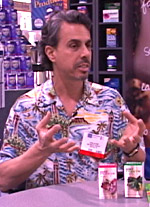 Kilham:Basically, I travel around the world investigating medicinal plants in different countries. Whether it's in the Amazon, Southeast Asia, Siberia, India or China, I go to a host country, hook up with people who are knowledgeable about or experts on a particular plant that I'm investigating, whether it's ginseng, maca, horny goat weed or anything at all.
Then I go as deeply as I can into the growing conditions. I investigate the science that the traditional folk use, the medicinal applications, the trade and all of the conditions around a plant. Kilham:Basically, I travel around the world investigating medicinal plants in different countries. Whether it's in the Amazon, Southeast Asia, Siberia, India or China, I go to a host country, hook up with people who are knowledgeable about or experts on a particular plant that I'm investigating, whether it's ginseng, maca, horny goat weed or anything at all.
Then I go as deeply as I can into the growing conditions. I investigate the science that the traditional folk use, the medicinal applications, the trade and all of the conditions around a plant. |
Ben-Erik van Wyk
See book keywords and concepts |  Notes Both types of chamomile are well known as medicinal plants. Roman chamomile is used as a sedative, antispasmodic and antiinflammatory (the essential oil is used in aromatherapy), while German chamomile is antispasmodic, anti-inflammatory, carminative and antiseptic. With an annual consumption of 5 000 tons, German chamomile is by far the most important from a medicinal point of view.
Chenopodium bonus-henricus
Good King Henry
Good King Henry plant
Description This is a perennial herb of up to half a metre in height, with fleshy, triangular leaves and small green flowers. Notes Both types of chamomile are well known as medicinal plants. Roman chamomile is used as a sedative, antispasmodic and antiinflammatory (the essential oil is used in aromatherapy), while German chamomile is antispasmodic, anti-inflammatory, carminative and antiseptic. With an annual consumption of 5 000 tons, German chamomile is by far the most important from a medicinal point of view.
Chenopodium bonus-henricus
Good King Henry
Good King Henry plant
Description This is a perennial herb of up to half a metre in height, with fleshy, triangular leaves and small green flowers. | | All these species are popular spices and medicinal plants in Southeast Asia and China but only the greater galangal is widely used and well known. Origin St history The plant is indigenous to tropical Asia, mainly Indonesia. It is widely grown in Malaysia, Laos and Thailand. Galangal is particularly popular in Thai cooking. Since the Middle Ages the fresh or dried rhizome has also become known as a spice in eastern Europe and Russia. Parts used The rhizome (without the roots but usually with short pieces of stem and young buds attached). |
Alex Steffen
See book keywords and concepts |  Aside from the trees, native medicinal plants are rapidly depleting, because of individual efforts to seek free, readily available treatments for HIV and AIDS. The threat on nontimber-forest resources compounds both the problem and the pursuit of a solution. Only the establishment of clinics, along with the availability of some conventional drugs, is offering some relief to depleted tree and plant species, as
The Thinning of Rural Culture
¦¦¦¦ The destruction of rural culture needs to be seen for what it is: a serious loss of capacity. Aside from the trees, native medicinal plants are rapidly depleting, because of individual efforts to seek free, readily available treatments for HIV and AIDS. The threat on nontimber-forest resources compounds both the problem and the pursuit of a solution. Only the establishment of clinics, along with the availability of some conventional drugs, is offering some relief to depleted tree and plant species, as
The Thinning of Rural Culture
¦¦¦¦ The destruction of rural culture needs to be seen for what it is: a serious loss of capacity. |
by Michael Murray, N.D. and Joseph Pizzorno, N.D.
See book keywords and concepts | | Many medicinal plants, such as echinacea and burdock, owe much of their immune-enhancing effects to inulin. Jerusalem artichoke is one of the richest sources of inulin available.
One caveat: Since the majority of carbohydrate in Jerusalem artichoke is inulin, these tubers may, like beans, cause flatulence in some people, so try them in small amounts initially. For those sensitive to gas-producing foods, a good deal of the inulin Jerusalem artichokes contain can be leached out by either boiling or freezing the tubers before cooking. |
Mike Adams, the Health Ranger
See article keywords and concepts | 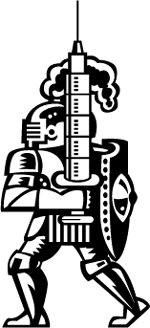 Car thieves would be given new jobs stealing phytochemical discoveries from medicinal plants in the Amazon rainforest that could be patented and sold as monopoly drugs. (Explanation: Drug companies frequently exploit natural medicinal compounds in plants, then modify and patent them for manufacturing prescription drugs, even while discrediting the healing potential of the very same medicinal plants. Lovastatin, for example, was stolen from red yeast rice, a natural supplement that lowers LDL cholesterol. Car thieves would be given new jobs stealing phytochemical discoveries from medicinal plants in the Amazon rainforest that could be patented and sold as monopoly drugs. (Explanation: Drug companies frequently exploit natural medicinal compounds in plants, then modify and patent them for manufacturing prescription drugs, even while discrediting the healing potential of the very same medicinal plants. Lovastatin, for example, was stolen from red yeast rice, a natural supplement that lowers LDL cholesterol. |
Mike Adams, the Health Ranger
See article keywords and concepts | 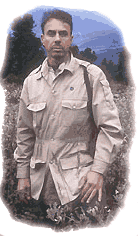 I research natural medicinal plants all around the world, and so I like the name "Medicine Hunter." I think it gives people an idea that they can relate to pretty easily.
Mike: And what do you do as a medicine hunter, then?
Kilham: Well, I go to different parts of the world where I research plant medicine. I research natural medicinal plants all around the world, and so I like the name "Medicine Hunter." I think it gives people an idea that they can relate to pretty easily.
Mike: And what do you do as a medicine hunter, then?
Kilham: Well, I go to different parts of the world where I research plant medicine. |
Mike Adams, the Health Ranger
See article keywords and concepts |  When doctors find that they're out of work because people are healthy, because they're avoiding prescription drugs, eating healthy foods, and using medicinal plants, we might retrain those doctors to become health coaches. They could go into nursing homes and schools, and be hired as health coaches teaching people how to be healthy. There's an idea! Why don't we have our healthcare professionals actually teach health instead of being experts in disease?
From the history of medicine comes the idea: "First, do no harm." Today organized medicine is doing tremendous harm. When doctors find that they're out of work because people are healthy, because they're avoiding prescription drugs, eating healthy foods, and using medicinal plants, we might retrain those doctors to become health coaches. They could go into nursing homes and schools, and be hired as health coaches teaching people how to be healthy. There's an idea! Why don't we have our healthcare professionals actually teach health instead of being experts in disease?
From the history of medicine comes the idea: "First, do no harm." Today organized medicine is doing tremendous harm. | | Covertly stealing from Mother Nature
Secretly, however, behind closed doors, all these pharmaceutical companies have people across the world trying to find medicinal plants to look for answers. They are basically stealing them from the native healers, the indigenous tribes in the rainforest, the deserts of Australia, you name it. They're stealing all these plants, then taking them back to the laboratory and trying to synthesize them. That's what they're doing behind closed doors. They know that the answers are in the plant. Publicly, however, they want to outlaw those plants. |
page 3 of 13 | Next ->
FAIR USE NOTICE: The research quoted here is provided under the protection of Fair Use provisions and published by the 501(c)3 non-profit Consumer Wellness Center for the purposes of public comment and education. Authors / publishers may submit books for consideration of inclusion here.
TERMS OF USE: Read full terms of use. Citations of text from NaturalPedia must include: 1) Full credit to the original author and book title. 2) Secondary credit to the Natural News Naturalpedia as a research resource and a link to www.NaturalNews.com/np/index.html
This unique compilation of research is copyright (c) 2008 by the non-profit Consumer Wellness Center.
ABOUT THE CREATOR OF NATURALPEDIA: Mike Adams, the creator of this NaturalNews Naturalpedia, is the editor of NaturalNews.com, the internet's top natural health news site, creator of the Honest Food Guide (www.HonestFoodGuide.org), a free downloadable consumer food guide based on natural health principles, author of Grocery Warning, The 7 Laws of Nutrition, Natural Health Solutions, and many other books available at www.TruthPublishing.com, creator of the earth-friendly EcoLEDs company (www.EcoLEDs.com) that manufactures energy-efficient LED lighting products, founder of Arial Software (www.ArialSoftware.com), a permission e-mail technology company, creator of the CounterThink Cartoon series (www.NaturalNews.com/index-cartoons.html) and author of over 1,500 articles, interviews, special reports and reference guides available at www.NaturalNews.com. Adams' personal philosophy and health statistics are available at www.HealthRanger.org.
|
 |
Refine your search
with Medicinal plants...
...and Key Health Concepts:...and Plants
...and Drugs
...and Medicine
...and Herbs
...and Drug
...and Medicines
...and Health
...and Products
...and Herbal medicine
...and Chemical
...and Adjectives:...and Medicinal
...and New
...and Herbal
...and Traditional
...and Medical
...and American
...and Natural
...and Active
...and Specific
...and Modern
...and Concepts:...and Species
...and Research
...and World
...and Study
...and Activity
...and Example
...and Development
...and Healing
...and Studies
...and Production
...and Objects:...and Plant
...and People
...and Rainforest
...and Data
...and Journal
...and University
...and Oil
...and Agents
...and List
...and Table
...and Where:...and Chinese
...and Europe
...and China
...and London
...and New york
...and West
...and Mexico
...and Berlin
...and America
...and United states
...and Medical Adjectives:...and Scientific
...and Therapeutic
...and In vitro
...and Molecular
...and Genetic
...and Internal
...and Biological
...and Adverse
...and Living
...and Antibacterial
...and Plants and Herbs:...and Leaves
...and Flowers
...and Root
...and Ginseng
...and Garlic
...and Bark
...and Trees
...and Roots
...and Spices
...and Flower
...and Who:...and Family
...and Human
...and Patients
...and British
...and Animals
...and Americans
...and Women
...and Herbalists
...and Practitioners
...and Physicians
...and Physiology:...and Effects
...and Effect
...and Increase
...and Increasing
...and Developing
...and Immune
...and Inhibition
...and Levels
...and Destruction
...and Reduced
...and Substances:...and Food
...and Extract
...and Water
...and Acid
...and Liquid
...and Bacteria
...and Decoction
...and Tincture
...and Essential oils
...and Powder
...and Actions:...and Growing
...and Understanding
...and Actions
...and Taking
...and Approach
...and Treating
...and Synthesis
...and Learned
...and Working
...and Play
...and Anatomy:...and Body
...and Tissue
...and Dna
...and Skin
...and Genes
...and Blood
...and Liver
...and Cells
...and Immune system
...and Heart
...and Medical Terms:...and Properties
...and Dosage
...and Results
...and Dosages
...and Interactions
...and Dose
...and Gene
...and Infusion
...and Stimulant
...and Placebo
...and Foods and Beverages:...and Fruit
...and Tea
...and Crops
...and Honey
...and Fruits
...and Vegetables
...and Sugar
...and Juice
...and Alcohol
...and Teas
...and Nutrients:...and Alkaloids
...and Alkaloid
...and Flavonoids
...and Antioxidant
...and Glycosides
...and Tannins
...and Polysaccharides
...and Calcium
...and Enzyme
...and Potassium
...and Health Conditions and Diseases:...and Cancer
...and Diabetes
...and Pain
...and Diarrhea
...and Infections
...and Wounds
...and Infection
...and Malaria
...and Dermatitis
...and Constipation
...and Macronutrients:...and Seeds
...and Oils
...and Minerals
...and Proteins
...and Enzymes
...and Fatty acids
...and Mineral
...and Protein
...and Calories
...and Carbohydrate
...and Organizations:...and Pharmacy
...and Lancet
...and Organization
...and Council
...and Government
...and Establishment
...and Fda
...and Pharmaceutical companies
...and Health food stores
...and Clinic
...and Treatment Modalities:...and Chinese medicine
...and Traditional chinese medicine
...and Ayurvedic
...and Folk medicine
...and Massage
...and Relaxation
...and Homeopathy
...and Meditation
...and Yoga
...and Biofeedback
...and Biological Functions:...and Metabolism
...and Period
...and Attention
...and Concentration
...and Memory
...and Digestion
...and Menstruation
...and Fertility
...and Strength
...and Breath
...and Drugs:...and Diuretic
...and Antibiotic
...and Laxative
...and Antibiotics
...and Aspirin
...and Antidepressant
...and Tablets
...and Chemotherapy
...and Sedative
...and Steroids
...and Properties:...and Antimicrobial
...and Anti-inflammatory
...and Expectorant
...and Antifungal
...and Antiseptic
...and Aphrodisiac
...and Analgesic
...and Relieving
...and Relieves
...and Irritant
...and Animals:...and Rats
...and Mice
...and Cat
...and Cattle
...and Insects
...and Insect
...and Worms
...and Dogs
...and Cows
...and Turkey
...and Biological Measures:...and Blood pressure
...and Body weight
...and Height
...and Blood glucose
...and Heart rate
...and Triglycerides
...and Blood cholesterol
...and Blood sugar levels
...and Blood levels
...and Chemicals:...and Ethanol
...and Poisons
...and Nicotine
...and Caffeine
...and Fragrance
...and Pesticides
...and Benzene
...and Dyes
...and Chlorine
...and Additives
...and Hormones and Biochemistry:...and Lipids
...and Hormones
...and Insulin
...and Steroid
...and Saliva
...and Neurotransmitter
...and Estrogen
...and Histamine
...and When:...and Summer
...and Winter
...and Spring
...and October
...and August
...and December
...and April
...and July
...and February
...and September
|
Related Concepts:
Plants
Medicinal
Plant
Species
Drugs
New
Herbal
Medicine
Herbs
Drug
Research
Chinese
Traditional
Medical
Effects
People
Medicines
American
Natural
World
Health
Europe
Study
Active
China
Products
London
Herbal medicine
Activity
Medicinal plant
Chemical
Example
Scientific
Medica
Development
Herb
Rainforest
Healing
Treatment
Studies
Therapeutic
Production
Family
New york
West
Specific
Time
Properties
Data
Mexico
Food
Leaves
Remedies
Modern
Extract
Flowers
Effect
Berlin
Fruit
European
America
Analysis
Wild
Materia medica
Extracts
History
Work
Journal
Natural products
Cultivation
Potential
Alkaloids
Chemicals
Conditions
Quality
Aromatic
Growing
Clinical
Botanical
Gardens
General
Cultures
Pharmacology
University
Human
Root
Oil
Chemistry
Diseases
United states
Agents
Cultivated
Cambridge
Interest
Patients
California
Body
Herbal drugs
Preparations
Pharmacognosy
|












